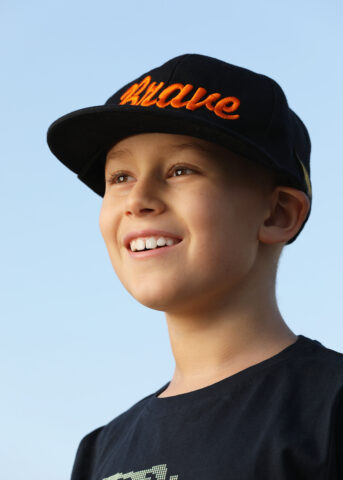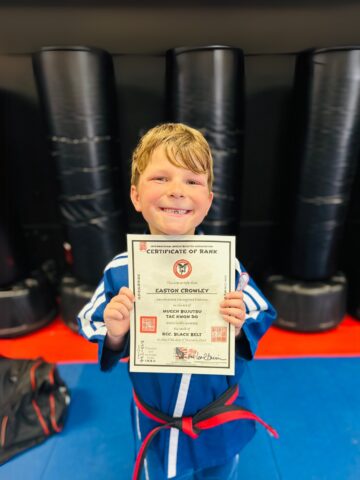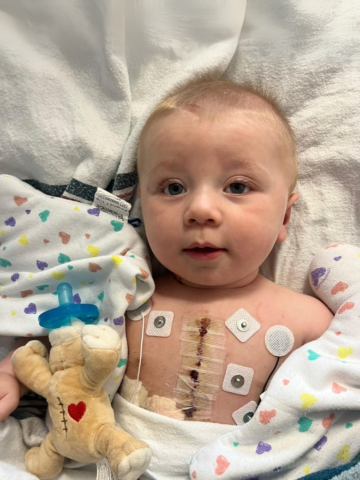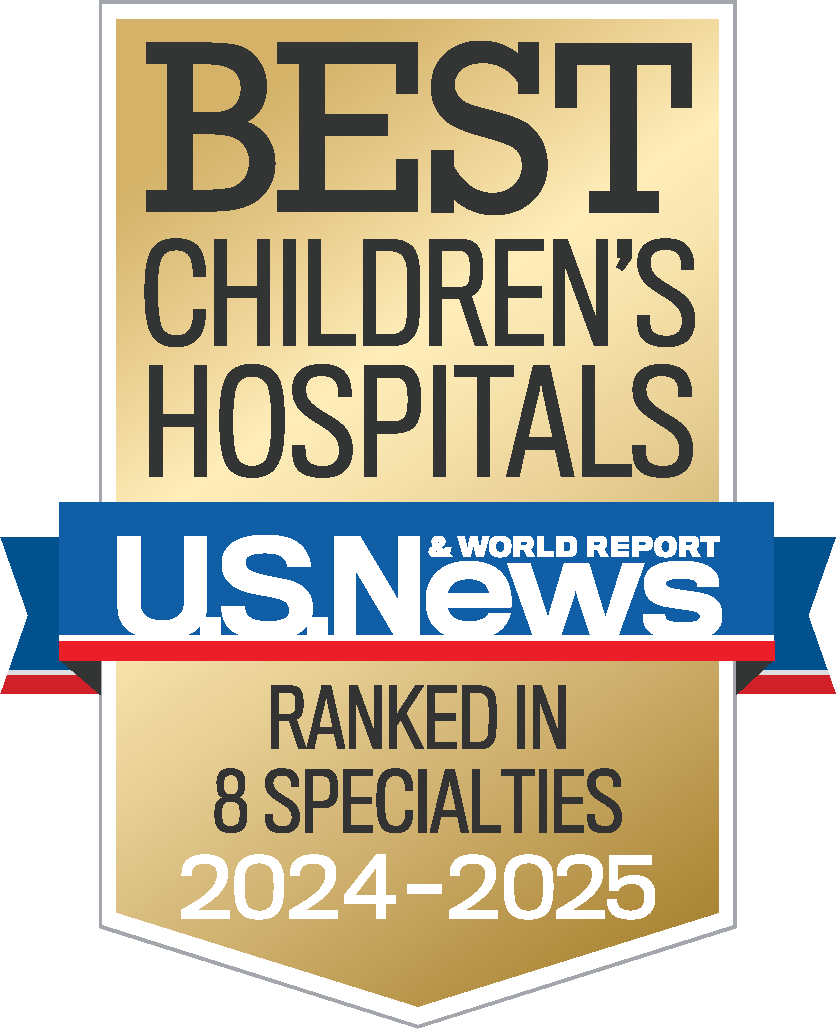Johanna and her husband Graham were expecting a healthy baby. Already parents to one little girl, they were looking forward to expanding their family.
At Johanna’s 33-week anatomy scan, she and Graham were thrilled to learn they were expecting a girl, but shocked to learn she might have club foot, a birth defect where the foot is twisted out of shape or position. They learned there was a chance it could be due to a neurological defect since everything else was showing up as normal.
“We started mentally preparing ourselves for our baby to have a club foot,” Johanna said. “We had another anatomy scan, but they couldn’t say for certain what was going on.”
On January 26, 2018 Johanna delivered a baby girl named Angelina via c-section. A neonatologist was in the delivery room in case Angelina needed immediate medical attention after birth. She was having trouble swallowing and was monitored in that hospital’s neonatal intensive care unit (NICU).
Three days later, a CHOC neonatologist rounding at the delivery hospital recognized that Angelina needed a higher level of care and a bigger team of specialists. He suggested that she might need an MRI to give doctors a better look at her brain, and determine if her condition was neurological.
“Even though I’d never been to there, I knew that when it was an option to go to CHOC, you go to CHOC,” Johanna said.
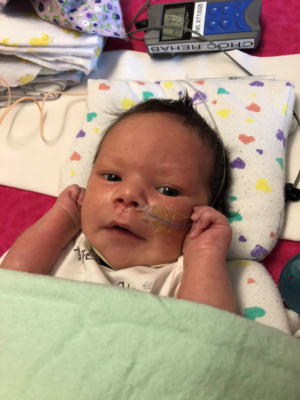
Their older daughter Genevieve had been born at St. Joseph Hospital in Orange, next door to CHOC Hospital.
“I was so freaked out before I had my first child, because of all the things that can go wrong during childbirth. I delivered Genevieve at St. Joseph because I liked knowing that CHOC as right next door if we needed them” Johanna said. “When they gave us the option to send Angelina to CHOC, there was no question—we just immediately went.”
Angelina was admitted to CHOC’s NICU and evaluated by neonatologist Dr. John Tran, of CHOC’s neurocritical NICU. Special rooms of CHOC’s NICU are designated for the neurocritical NICU, where neonatologists and neurologists have the expertise and equipment to carefully treat babies with neurological issues.
An MRI showed that Angelina had polymicrogyria, a condition characterized by abnormal brain development. Johanna and Graham had never heard of this condition and had a hard time processing the diagnosis. Then they met with Dr. Donald Phillips, a pediatric neurologist at CHOC.
He explained to the family that typically, the surface of the brain has many ridges and folds, called gyri. In babies born with polymicrogyria, their brain surface has too many folds that are too small to process information received, which leads to problems with body functioning, similar to the effect a stroke can have on the brain.
Dr. Tran explained the spectrum of care for polymicrogyria. Some patients are nonverbal, some go to school, and some even live with this condition and never know. It was too soon to tell where on that spectrum Angelina would fall.
“Caring for babies with neurological conditions can be difficult. Not only are you medically treating a newborn baby, but you are also counseling a family and giving them an uncertain prognosis,” says Dr. Tran. “In the neurocritical NICU, our first goal it to treat the baby’s underlying condition. The second goal is to educate the most important members of our care team― the parents. We know that the NICU is not a part of the birth plan, but our job is to help alleviate some of the anxiety that comes with uncertainty. We strive to optimize the potential of our patients, whatever it might be, as they go home.”
The diagnosis was a lot for her parents to take in.
“We knew we were getting the best care for our daughter, but it was such heavy news,” Johanna said. “Even with a typical kid, we don’t really know what their life will be like. Every life is a gift. Once I started going towards that mentality, I realized that nothing is certain, even with typical kids.”
At her delivery hospital, one of the red flags that Angelina needed a higher level of care was that she kept crashing when she was breastfeeding.
“It made me freaked out to feed my daughter,” Johanna said.
Soon after coming to CHOC, Angelina began swallowing therapy. When someone experiences swallowing difficulty, they are at risk for food or liquid entering their lungs, called aspiration, which may lead to pneumonia. Karin Mitchell, a speech and language pathologist who specializes in the NICU setting, worked with Angelina on swallowing safety. Karin guided baby Angelina through exercises for her mouth and tongue to learn how to properly swallow saliva. Then, they could work on breastfeeding support and syringe feeding.
Angelina couldn’t move her legs when she was born, and her parents weren’t sure if she ever would. Thanks to physical therapy, today she can bend her legs more than 90 degrees.
Throughout their stay in the NICU, Johanna and Graham were thankful to have the ability to sleep overnight in their daughter’s private room. Because Angelina was born during flu season, her 3-year-old sister couldn’t visit the NICU. Her parents would stay at CHOC all day, go home to do their older daughter’s bedtime routine, and then one parent return to CHOC to sleep alongside their new baby.
“We had the privacy we needed, and I felt comfortable doing kangaroo (skin to skin) care,” Johanna said. “I hadn’t planned on my baby staying in the hospital, and at least having our own room, and even something as small as being able to watch TV gave me a small sense of normalcy.”
Johanna and Graham also appreciated the sense of normalcy provided by a Super Bowl party thrown for parents on the unit. An infant CPR class offered on the unit helped them feel more prepared to eventually take their baby girl home.
For big sister Genevieve, CHOC offers an innovative webcam system so family members can be together and bond with their newborns when they can’t be at the bedside. The system allows families to see real-time, live video of their infant remotely, from anywhere they can securely log onto the internet.
“CHOC had a lot of things in place, like the secure camera in Angelina’s room, to make things easier on us as a family,” Johanna said.
A month after she was born, Angelina got to go home for the first time.
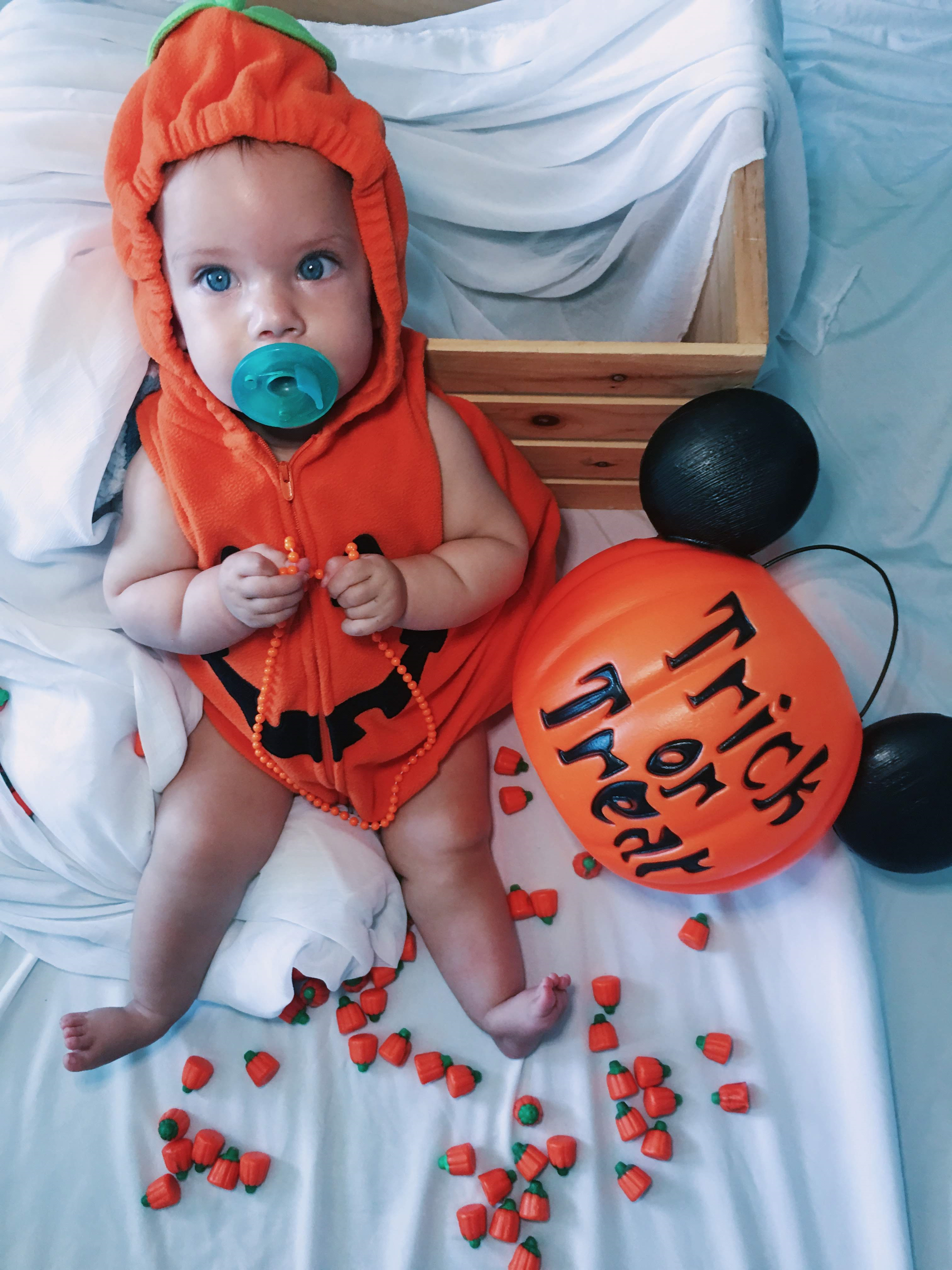
“We were so ready to take her home, and finally be together as a family,” Johanna said. “But it was still a little nerve-wracking. We bought four different types of baby monitors; we were used to seeing her surrounded by machines.”
A few weeks later, Angelina began swallowing therapy twice per week and physical therapy three times per week. Now 15 months old, the amount of progress she has made has made her parents proud.
She couldn’t move her legs at birth, but a year later she is rolling and reaching. Her parents credit her CHOC physical therapist Lauren Bojorquez.
“Lauren didn’t just think of what Angelina was doing now; she was always thinking ahead about what would benefit her in the future,” Johanna said.
For example, Lauren and Angelina worked on rolling because it would eventually help her learn to sit. When babies roll, it helps develops muscles that will later help them sit.

Meanwhile, Angelina was working with CHOC speech and language pathologist Annie Tsai to learn how to cough, swallow, and accept food by mouth. Swallowing therapy focused not on quantity of food consumed but on quality of how the child feeds or swallows safely. Angelina’s work with Annie focuses on movement, strength and coordination within the mouth to prepare for eventually swallowing food.
Angelina still receives most of her nourishment through a feeding tube, also called a g-tube. The tube can stay in a patient’s stomach for months or years and allows the child to receive fluids, medicines and nutrition when they can’t take in enough nutrition by mouth. Every few months, Angelina sees gastroenterologist Dr. Jeffrey Ho for follow-up appointments for nutrition, feedings and g-tube care. Dr. Ho remains in close contact with Annie, her speech and language pathologist.
“Being able to eat in a typical manner is always the goal,” says Dr. Ho. “Every baby and child are different. Right now, we are focusing on what we can do to better optimize her potential to orally feed.”
Now, Angelina can sit in a highchair, bring her hands to her mouth, accept small tastes by mouth and better clear her congestion especially when she’s sick.
“Something I hadn’t realized before Angelina was how big a part food plays in our culture. As people get older, going out to eat or meeting for coffee is a social activity. I was sad that she wouldn’t get to have those same experiences,” Johanna said. “When she started to accept tastes by mouth, it made me think of her in the future, and being able to go out with friends and at least taste something, and still participate socially.”
To further practice feeding therapy at home, Angelina has a mesh pacifier typically used to soothe teething babies. Her parents often put the same foods in her pacifier as the rest of the family is eating. So far, there hasn’t been a food she’s tried that she hasn’t liked.
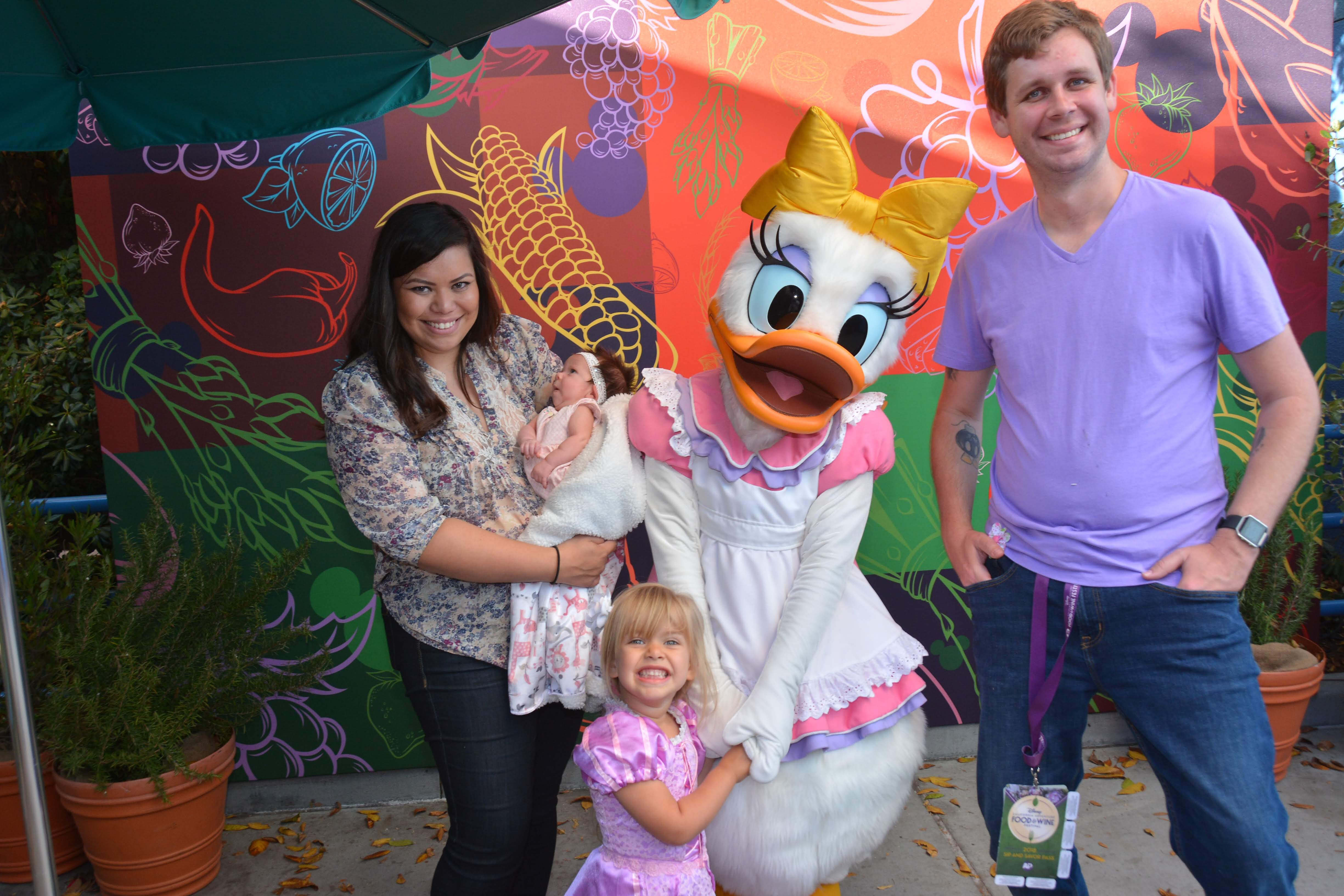
Angelina’s paternal grandma was an adult speech and language pathologist by training. When Angelina started speech therapy, she updated her license and certification to help her granddaughter at home. She comes to some of her sessions at CHOC and learns from Angelina’s care team.
Also participating in therapy is big sister Genevieve, who helps hold the pacifier and can even spoon-feed her baby sister, with a little bit of help.
“I am super grateful for CHOC,” Johanna said. “That’s why our family started participating in CHOC Walk when Angelina was born.”
These days, Angelina likes playing with toys, playing with her big sister, and listening to all types of music.
“I had a lot of preconceptions about disabilities and special needs,” Johanna said. “Having a child with special needs is not what I thought it would be. It’s better than that.”
Get more expert health advice delivered to your inbox monthly by subscribing to the KidsHealth newsletter here.
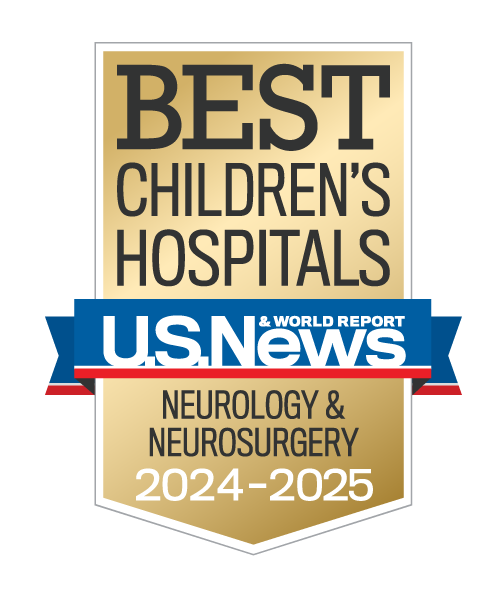
Learn more about CHOC’s Neuroscience Institute
CHOC Hospital was named one of the nation’s best children’s hospitals by U.S. News & World Report in its 2024-25 Best Children’s Hospitals rankings and ranked in the neurology and neuroscience specialties.

